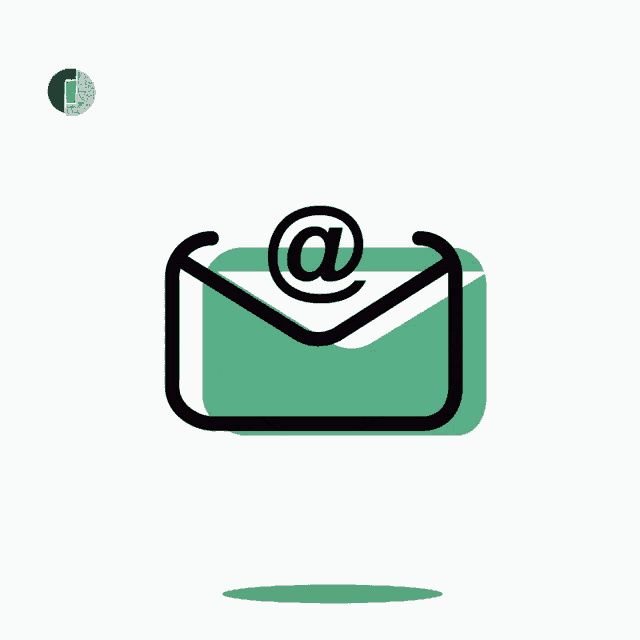How to Measure the Effectiveness of Your Email Campaigns: The Complete Guide
-
Sergey Berezin
Copywriter Elbuz
Each newsletter sent is a chance that should not be missed. But how do you know if you've made the most of it? With metrics that can open your eyes to success and failure, we'll dive into a world of data and analysis where every number becomes a clue. What's behind your numbers? Take the mystery out and learn how to price your email campaigns to turn every click into gold.

Glossary
📬 Email distribution - automated sending of emails letters to a large number of recipients for the purpose of information or promotion.
📊 Metrics - quantitative indicators used for assessing the effectiveness of email campaigns.
📦 Email deliverability - percentage of emails sent, which successfully reach the addressee.
🚫 Refusals - number of cases when sending The letter was not completed for various reasons (for example, an error in the address).
👁️ Open rate - percentage of recipients who opened letter from the total number of those to whom it was sent.
💻 CTR (Click-Through Rate) - click-through rate, which measures the percentage of users who clicked on links in an email.
🔄 Conversion - percentage of recipients who completed the target action (for example, a purchase) after interacting with the letter.
❌ Unsubscribes - percentage of users who unsubscribed from mailing after receiving the letter.
💰 ROI (Return on Investment) - return on investment (ROI), which measures the income generated by a mailing compared to the cost of running it.
🚨 Spam complaints - number of recipients, who marked the email as junk or spam.
📈 Analytics - the process of collecting and analyzing data to evaluate the effectiveness of email campaigns.
🔍 Built-in analytics - analysis tools provided by email marketing service itself, allowing you to track key metrics.
🌐 Web analytics systems - third-party tools , which analyze user actions on the site and can help evaluate the effectiveness of email campaigns.
📚 Audit - a comprehensive check aimed at analyzing the effectiveness of mailings and identifying areas for improvement.
How I effectively evaluate email campaigns
When I started doing email marketing, one of the first questions that interested me was: how to measure the effectiveness of my mailings? From my own experience, I have come to the conclusion that choosing the right metrics allows you to get a complete picture of the success of your campaigns. In my practice, I have used several key indicators and data sources that have significantly helped in understanding the effectiveness of email campaigns.

Email deliverability
Deliverability is one of the most important parameters that I began to take into account from the first steps in email marketing. For me, it was the percentage of emails sent that actually reached the recipients' inboxes. I noticed that the normal value for this metric is around 95%. I always used the formula:
Deliverability ={Number of emails delivered}\{Number of emails sent}*100
To maintain high deliverability, I periodically cleaned my subscription database, deleting inactive addresses. This significantly improved my statistics and reduced the number of delivery errors. 🌟
Rejections
Rejection rate is another metric I looked at. Statistics showed me that there are two types of failures: soft and hard. Soft bounces are usually associated with temporary problems such as full mailboxes. Hard refusals are non-existent addresses. 📉
I learned to calculate the bounce rate using the formula:
Bounce rate = {Errors}\{Sent emails}*100
If my bounce rate was above 2-5%, I would begin to check my subscriber base more thoroughly, encouraging double opt-in via a special form. As a result, I was able to significantly reduce the number of refusals and strengthen relationships with clients.
Open Rate
Open Rate indicates how many of the emails sent were actually opened. The average values of this metric ranged from 4.7% to 22%. I always used the formula:
Open Rate ={Open Emails}\{Delivered Emails}*100
I paid attention to the correct subject line and base segmentation to make each newsletter as relevant as possible for recipients. I've noticed that this can significantly increase open rates. 💌

CTR – click-through rate
Click through rate showed me how interested the audience is in my emails. I calculated this indicator like this:
CTR ={Number of clicks}\{Delivered emails}*100
Understanding that this parameter directly depends on the open rate, I tried to improve the quality of content and add active verbs to calls to action. I believe that using content analytics is always an opportunity to improve click-through rates.
Conversion rate
Conversion is perhaps the most important metric. It shows how many recipients completed the target action. I've noticed that the targeted actions may vary for each campaign.
To calculate the conversion, I used:
Conversion ={Number of targeted actions}\{Emails delivered}* 100
I have always used personalized offers as part of my campaigns, which increased the chances of a subscriber taking the desired action. 🎯
Unsubscribe rate – unsubscribes
Unsubscribes for me have become an important marker showing how interested the audience is in my content. Statistics have shown that the normal rate does not go beyond 0.5-1%. If it exceeded this value, I tried to work more carefully on the quality of the content.

For example, I added more entertaining content to dilute the overly aggressive sales. This helped me keep my subscribers interested and reduce my unsubscribe rate.
ROI – return on investment
When assessing return on investment, I always used a special online calculator. I calculated:
ROI ={Campaign Profit}\{Campaign Cost}
This helped me see what of my email campaigns were the most profitable, and also identify areas where optimization is worthwhile.
Spam complaints
This indicator constantly reminded me of the need to adhere to the rules and quality standards in mailings. I tried to follow simple rules - do not use large fonts, avoid overcrowding with links and always give the opportunity to unsubscribe from the mailing list. 🛑
All of the above metrics emphasize the importance of a comprehensive analysis of the results of email campaigns. I believe that using each of these metrics seamlessly and interconnectedly can significantly improve results and strengthen customer connections. If you want to explore this topic in more depth, I recommend reading the materials on Email Marketing.
Total
| Parameter | What's good | What's bad |
|---|---|---|
| Deliverability | > 95% | < 95% |
| Rejections | < 5% | > 5% |
| Open rate | > 20% | < 4.7% |
| Click through rate | > 4% | < 2% |
| Conversion | > 10% | < 5% |
| Unsubscribes | < 0.5% | > 1% |
| ROI | > 100% | < 50% |
| Spam complaints | < 1% | > 2% |
How to effectively use analytics to evaluate email campaigns?
When I first started my email marketing career, I always wanted to understand how to measure the effectiveness of my email campaigns. Every time I launched a campaign, I wondered: How successful were my emails? Over time, I have explored several data sources that have made this process much easier.

The first thing I did was research built-in analytics in mailing services. I chose a platform like SendPulse and very quickly realized how useful built-in analytics could be. In each report, I could see the open rate of messages, the browsers and devices from which messages were opened, and even clicks on links. For example, in one of my projects, I noticed that emails were opened more often on mobile devices, which led me to think about optimizing the design for mobile platforms.
I also used information about which messages ended up in spam. By analyzing the complaints, I was able to understand that some words in the headings were preventing my letters from reaching the general list. I started experimenting with headlines and noticed improvements in my open rates.
The key to this process was the discovery map. She showed me where my audience was located by geolocation, and this made it possible to customize the content to the specifics of the regions. I also mastered the art of creating reports using eSputnik, where I was able to analyze not only openness, but also CTR.
Integrations with web analytics systems
To deeply analyze the results of your email campaigns, I strongly recommend connecting integration with systems web analytics. I started using Google Analytics to track conversions and actual sales from email campaigns. I truly believe that this was one of the best decisions I have ever made.
First, I found the “Collect statistics” option in UniSender and activated integration with Google Analytics. 🚀 It was easy! After installing the counter on the site, I was able to see which emails led to actual leads and deals.
When analyzing results in Google analytics, I discovered that some emails did not generate interest among subscribers. Using reports, I received detailed information for each source, including data on visits and time on the site. This helped me optimize my emails when I started adding audience segmentation.

In my experience, I also noticed that using UTM tags made it possible to track the effectiveness of each advertising campaign - I recommend all practitioners to implement this simple but effective tool.
In the end, I came to the following: integration with web analytics systems is an integral part of a successful email strategy. 💡
| Helpful | Not useful |
|---|---|
| Use built-in analytics | Ignore open rates |
| Set up web analytics integrations | Rely on just one platform |
| Experiment with headlines | Do not track conversions |
| Divide audience by interests | Ignore UTM tags |
My experience has shown that proper analysis and use of metrics can significantly improve the effectiveness of email campaigns, thereby ensuring both business growth and customer satisfaction.
How to correctly evaluate the effectiveness of email campaigns
In While working on email marketing campaigns, I was repeatedly faced with the question: how to accurately evaluate their effectiveness? I was able to find out that having well-thought-out metrics can significantly improve the quality of analysis and adjust strategies. Based on my experience, I can highlight several key aspects.

First, I always set clear goals for each newsletter. These could be acceptable open rates, click-through rates, or unsubscribe rates. For example, in one of my campaigns I set a goal of 20% email open rate. In practice, events developed in such a way that only 15% of subscribers opened the letters. Looking at these results, I wondered: maybe it's the headers or the time of sending? I decided to test different options and ultimately achieved a 25% open rate, which had a positive effect on my results.
There are also quite a few problems I've seen if your metrics are out of whack. I would recommend that you pay attention to several important factors:
- Check your target audience 📧: perhaps the emails are not being sent to those subscribers who are really interested in your content.
- Make sure your content meets user expectations. If I used the same templates too often, it affected engagement.
- Don't forget about regular audits. In my case, I noticed that the old address databases led to an increase in the number of emails ending up in spam.
As an expert in this field, I suggest also looking at open rates and click-through rates, tying them to traffic sources and your audience segments. For example, when sending two different versions of an email, I noticed how a small design detail could impact click-through rates by up to 30%.
“Properly assessing the effectiveness of your email campaigns should be based on data, not guesswork” - Charlene Rogers, eBay expert.
I also recommend using A/B testing — with its help I have repeatedly improved campaign metrics. For example, in one project I only changed the color of the buttons in the text and, depending on the choice, I received a 10-15% increase in clicks.
I am convinced that having clear and measurable goals, as well as constantly monitoring and adjusting your strategy, helps not only maximize engagement, but also significantly increase the ROI of your campaigns.
| Benefit | Must Avoid |
|---|---|
| Clearly Defined Goals | Lack of analysis of results |
| Regular audit of the subscriber base | Ignoring open rates |
| A/B testing | Using old and inactive databases |
So, if you want to succeed in email marketing, you need to learn how to plan and measure your actions correctly. Remember to explore different data sources and actively use them for analysis. I keep recommending that you pay attention to all of the above, because these are important steps towards successful email campaigns!

Experience company Morele
Company Morele is a well-known player in the electronics and high technology market, which successfully operates on the Polish market and abroad outside of it. Since its founding in 2006, Morele has established itself as a trusted resource for purchasing a variety of technical products. The company's main goal is to provide customers with high quality products at competitive prices and to provide excellent service and shopping experience.

Goals and objectives
The main goals of Email Marketing for Morele were:
- Increase conversions via email campaigns.
- Increase email open rates and click-through rates (CTR).
- Reducing the number of unsubscribes (unsubscribe rate).
The goal was to create a more targeted and personalized email , increase deliverability and retain customers at 20% of the total number of emails sent.
Issues to solve
The main problem that the company faced was the low open rate of emails, which negatively affected their RoI. In addition, a large number of recipients unsubscribed from mailings, which also caused concern.
Target Audience Characteristics
Morele's target audience includes:
- Tech enthusiasts and gamers 🎮
- Students and young professionals 📚
- Families in need household appliances 🏠
Customers have high expectations for the quality of service and products, and strive to find the best deals on the market.

Key Points to Engage Prospects
- Special offers and promotions. More than 35% of email open rates are associated with major sales and promotions.
- Personalized content. By analyzing customer behavior, Morele introduced interest segmentation, which increased the effectiveness of the campaign.
- Fast and informative feedback. It is worth noting the introduction of a feedback system in the process of sending letters.
Specific results of the project
| Parameters | Value |
|---|---|
| Average open rate | 24% (+8% for the quarter) |
| CTR | 12% (+5% for the quarter) |
| Unsubscribe rate | 2% |
| ROI | 400% |
| Spam complaints | 0.5% |
"Setting up analytics systems and using A/B tests has helped us significantly improve our results and connect with our customers." — Daria Zhuravskaya, marketer at Morele.
Thus, the audit and subsequent optimization Morele's email newsletters were a real breakthrough, allowing not only to achieve short-term results, but also to lay the foundation for sustainable growth and stability in the market. 🚀
Related FAQ: How to Measure the Effectiveness of Your Email Campaigns - The Complete Guide
What are the key metrics for evaluating effective email campaigns?
Key metrics include email deliverability, open rates, click-through rates (CTR), conversions, unsubscribe rates, ROI, and spam complaints.
What is open rate and why is it important?
Open rate is the percentage of recipients who opened your email. It's important because it helps you understand how effective your title and message are in capturing your audience's attention.
How is CTR (click-through rate) calculated?
CTR is calculated as the number of clicks on links in an email divided by the number of opens multiplied by 100 to determine the percentage.
What is the unsubscribe rate and how can I reduce it?
Unsubscribe rate is the percentage of recipients who unsubscribe from your emails. To reduce it, you need to offer valuable content, segment your audience, and not forward too often.
How to improve email deliverability?
To improve deliverability, it is important to keep your database clean, use opt-in confirmation, and avoid spam triggers in your content.
What is ROI in the context of email marketing?
ROI (return on investment) measures the profit received from email campaigns relative to the investment made. This helps you measure the effectiveness of your marketing spend.
How to collect data to analyze the effectiveness of mailings?
Data for analysis can be collected from built-in analytics in email services, web analytics systems, and also through surveys among recipients.
How to deal with high spam complaints?
With a high level of spam complaints, it is worth analyzing the content of mailings, subscriber segmentation and sending frequency, as well as providing an opportunity to easily unsubscribe.
How often should you audit your email campaigns?
It is recommended to audit your email campaigns regularly, at least quarterly, to adapt to changes in subscriber behavior and new trends.
What is the importance of segmentation in email marketing?
Segmentation allows you to send more targeted and relevant messages to different groups of your audience, which helps improve open rates and conversions.
Thank you for reading and for becoming wiser! 🥳
Now that you're armed with the knowledge of how to properly evaluate your email campaigns, you're ready to take your position in this exciting world. 📈 You learned which metrics really matter - from open rates to clicks and conversions. I once launched a newsletter that was on the verge of failure, but using analytics, we improved the content and the end result exceeded all expectations! 🤯 I'm sure that with your new skills, every email you send will become a masterpiece. Feel free to share your thoughts in the comments!

- Glossary
- How I effectively evaluate email campaigns
- How to effectively use analytics to evaluate email campaigns?
- Integrations with web analytics systems
- How to correctly evaluate the effectiveness of email campaigns
- Experience company Morele
- Related FAQ: How to Measure the Effectiveness of Your Email Campaigns - The Complete Guide
- Thank you for reading and for becoming wiser!
Article Target
Teach readers the basics of evaluating the effectiveness of email campaigns to improve their effectiveness.
Target audience
Marketers, email marketing specialists, business owners.
Hashtags
Save a link to this article
Sergey Berezin
Copywriter ElbuzIn the world of virtual opportunities, I am the mastermind behind the success of online stores. Words are my tools and automation is my magic recipe. Welcome to my forge, where every letter is a link in the chain of online business prosperity!
Discussion of the topic – How to Measure the Effectiveness of Your Email Campaigns: The Complete Guide
Information on how to correctly measure the effectiveness of email campaigns, what metrics are important and how to use data sources to analyze the results.
Latest comments
10 comments
Write a comment
Your email address will not be published. Required fields are checked *



















Tom Smith
I agree that email open rates are just the beginning! What metrics do you think are important to measure subscriber engagement? 🤔
Anna Müller
You definitely need to look at CTR and conversions! And also, for example, which links users click most often. This can open your eyes to some interesting things! 📊
Luis Fernández
And I always add A/B testing to my strategy. This tested solution helps you discover what works best for your audience! 🧪
Sofia Rossi
I agree with Louis! It is also important to consider what content provokes a strong reaction from users. Sometimes quality content is more important than different metrics! 📈
Katarzyna Nowak
Do you think it’s worth measuring ROI from email campaigns? I always thought that this was the most key point in analysis! 💰
Sergey Berëzin
Look, ROI is really important, but don't forget about the long-term relationship with your subscribers. Understanding their preferences can make a world of difference! 📬
Hans Schmidt
Yes, that's right. But I still think that most of the new email marketing trends are just a waste of time. The good old way always worked better. 😒
Olga Petrenko
But the industry itself is constantly evolving! We need to move forward and not stay in the past. We must adapt. 🚀
Giuseppe Bianchi
Exactly! And if you don’t try, how can you find something new and effective? It's better to experiment than to sit and complain about changes. ✨
Marta Kowalski
By the way, has anyone analyzed the time of sending letters? I've heard that this can also have a big impact on open rates. 🕒